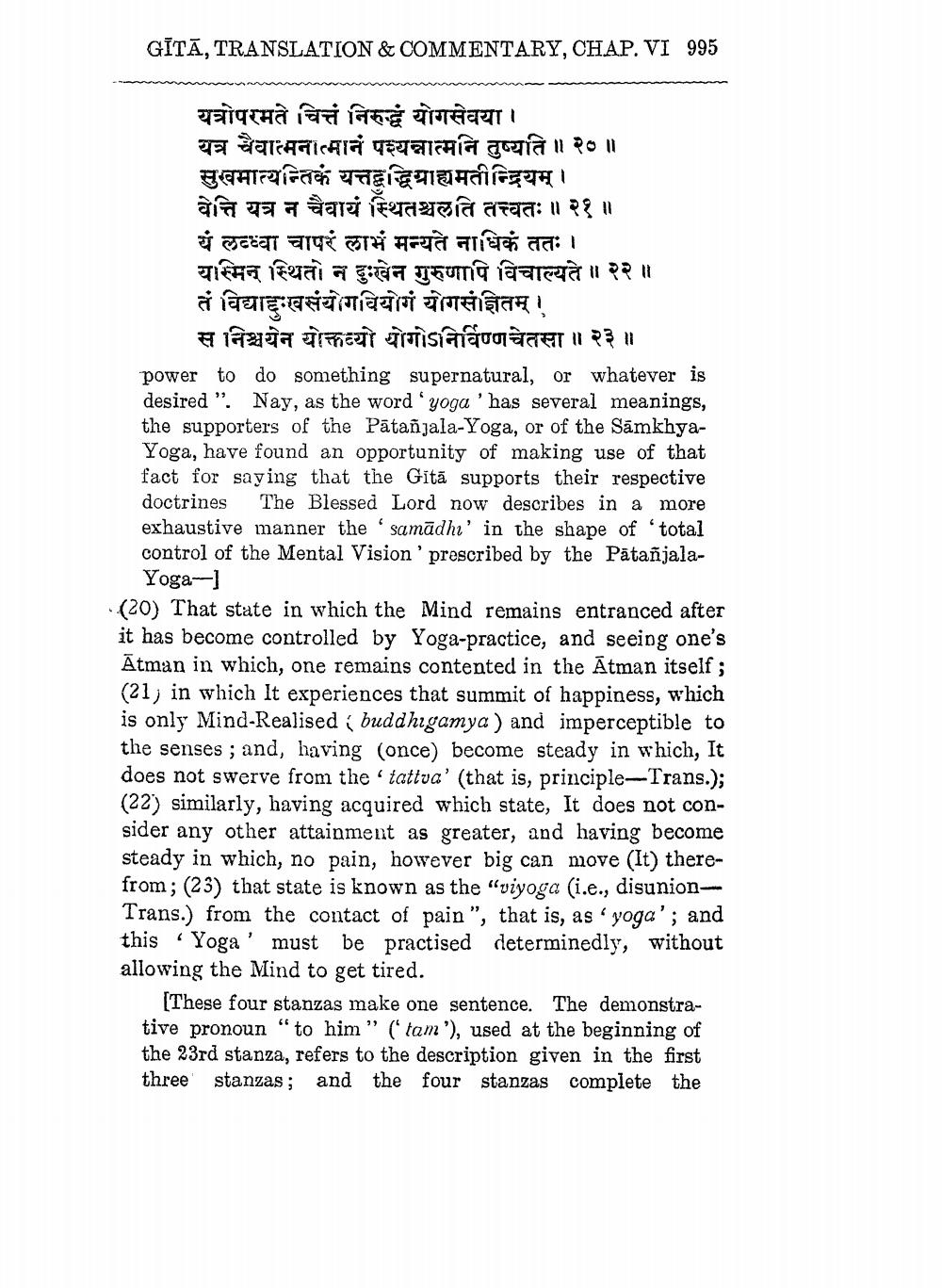________________
GĪTĀ, TRANSLATION & COMMENTARY, CHAP. VI 995
यत्रोपरमते चित्तं निरुद्धं योगसेवया। यत्र चैवात्मनात्मानं पश्यन्नात्मनि तुष्यति ॥ २० ॥ सुखमात्यन्तिकं यत्तद्वद्धिग्राह्यमतीन्द्रियम् । वेत्ति यत्र न चैवायं स्थितश्चलति तत्त्वतः ॥२१॥ यं लब्ध्वा चापरं लाभं मन्यते नाधिकं ततः । यास्मिन स्थितो न दुःखेन गुरुणापि विचाल्यते ॥ २२ ॥ तं विद्यादुःखसंयोगवियोगं योगसंज्ञितम् ।
स निश्चयेन योक्तव्यो योगोऽनिर्विण्णचेतसा ॥२३॥ power to do something supernatural, or whatever is desired ". Nay, as the word 'yoga' has several meanings, the supporters of the Pātañjala-Yoga, or of the SāmkhyaYoga, have found an opportunity of making use of that fact for saying that the Gitā supports their respective doctrines The Blessed Lord now describes in a more exhaustive manner the samādhi' in the shape of 'total control of the Mental Vision 'prescribed by the Pātañjala
Yoga-) (20) That state in which the Mind remains entranced after it has become controlled by Yoga-practice, and seeing one's Ātman in which, one remains contented in the Ātman itself; (21) in which It experiences that summit of happiness, which is only Mind-Realised ( buddhigamya ) and imperceptible to the senses ; and, having (once) become steady in which, It does not swerve from the 'tattva' (that is, principle-Trans.); (22) similarly, having acquired which state, It does not consider any other attainment as greater, and having become steady in which, no pain, however big can move (It) therefrom; (23) that state is known as the "viyoga (i.e., disunionTrans.) from the contact of pain ", that is, as yoga'; and this Yoga' must be practised determinedly, without allowing the Mind to get tired.
[These four stanzas make one sentence. The demonstrative pronoun "to him " ( tam'), used at the beginning of the 23rd stanza, refers to the description given in the first three stanzas; and the four stanzas complete the




